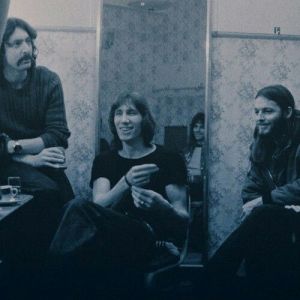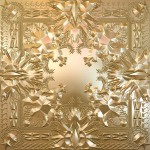It’s been a while since I randomly ranked something. So why not list my ten favorite bands of the decade when the rock group was supposedly king? In eighth grade I would’ve told you that the ’70s was the only decade a music fan needed. Zeppelin and Floyd were my world. I’ve gotten less stupid since then, but as you can see here, 13-year-old me is still in there somewhere.
To be clear: solo artists are not eligible. But bands that were crucial to a solo artist’s body of work – e.g. The Heartbreakers, Crazy Horse – are in the running. Why? Because this is the only sliver of the universe that I can control. My cyber-roof, my rules. To the list machine!
![]()
10. Television
The sound of a single bird chirping can be pleasant. But combine it with other feathered friends, and it’s an entirely different experience – a psychologically restorative level of ambient noise. Such is the guitar interplay of Tom Verlaine and Richard Lloyd. On the two albums that Television released before breaking up in 1978 – the jaw-dropping, all-time-great debut Marquee Moon and its merely fantastic follow-up Adventure – the duo plays like a pair of skylarks, instinctually aware of one another as their riffage soars heavenward. These CBGB regulars did more for punk artists drawn to artful forms of rebellion than any other ’70s band. Two albums were all they needed.

9. Sly and the Family Stone
If Sylvester Stewart could’ve somehow just retired in 1970, he could’ve spent the rest of his life teaching seminars on how to use effusive, unbridled positivity as a weapon. Instead, he spent the decade dimming the lights, retreating to his home studio/heroin den, refusing to sing a simple song. But before fading into obscurity, he gave us the two finest Sly and the Family Stone albums. The murky, conflicted There’s a Riot Goin On walked through the valley of personal and political corruption. And Fresh came out the other side, doing justice to its title with pristinely funky treatises on thankfulness and peace of mind. In the ’60s, Sly and the Family Stone took us higher. In the ’70s, they helped us cope.

8. Black Sabbath
“What is this that stands before me?” sings Ozzy Osbourne on “Black Sabbath,” the opening song on his band’s 1970 debut. I’d imagine a lot of listeners felt the same way. Because Black Sabbath was a true original, frighteningly ahead of its time. Like many English bands of this era, the Birmingham quartet was drawn to the intoxicating pentatonics of American blues music. But they were never content to just rip it off. Black Sabbath, and the three equally masterful albums that followed it, favored slower tempos and lower registers, letting each minor chord marinate in its own midnight. In the process, they invented heavy music as we know it. Tony Iommi made it okay for guitarists to value atmosphere more than muscle. And Osbourne showed how the right vocal inflection could make even the hokiest weed pun sound utterly, believably haunting. What stood before us was a revolution.

7. Fleetwood Mac
When I was a young man, the soft, multi-platinum sheen of peak Fleetwood Mac did nothing for me. It just felt harmless and inconsequential to someone who’d never had real adult feelings. But in my thirties, I heard “Over My Head,” seemingly for the first time. That song was the key to a treasure chest of unparalleled grown-person songwriting, made even more profound by the hard-won wisdom in Stevie Nicks’s voice. The band’s trio of ’70s classics – Fleetwood Mac, Rumours and Tusk – are full of nuanced, conflicted, reassuringly human observations about love and aging. Qualities that don’t really come into focus until you reach a certain age, and start needing that reminder to keep thinking about tomorrow.

6. Led Zeppelin
Critics were famously dismissive of Led Zeppelin in its heyday. To an extent, the band deserved it, having gotten famous by passing off American blues songs as their own, while not exactly caring about lyrics. But starting in 1970, Zeppelin stopped coasting on these hyper-masculine thrust-fests. The traditional folk and country of Led Zeppelin III, Tolkien-inspired proto-metal of Led Zeppelin and kaleidoscopic cloudburst of Houses of the Holy make for one of the most stunning growth spurts in rock history. The swagger of the world’s biggest rock band is still there, but it has evolved from male confidence to artistic confidence. Instead of giving us every inch of their love, these guys were exploring every corner of their imaginations.

5. Parliament/Funkadelic
Like a Kleenex is a tissue, like a Xerox is a photocopy, Parliament is funk. The music George Clinton’s group released in the 1970s could be experienced on a variety of levels, each of them incredibly rewarding. 1) As the greatest bass-driven, shout-along party music ever recorded, 2) As compositional big band achievements that deserve professorial study alongside Duke Ellington, 3) As an audacious social statement that upended the perception of black culture as an alien presence in America. When Parliament/Funkadelic emerged from its mothership, it was The Day the Earth Got Down. They expanded the possibilities of funk music, inventing new ways to utilize synthesizers and guitar solos, giving a whole new attitude to the art of spoken word. “Most of all you need funk,” they advised, with a sense of joy and purpose that’s healthier than the air we breathe.

4. Steely Dan
In the beginning, Steely Dan flirted with the idea of sounding pretty. Its 1972 debut had two lead singers – the honey-throated David Palmer and the feistily froggy Donald Fagen. The songs were good enough to work with Palmer’s lite-FM falsetto croon, but luckily, Fagen and his guitarist/songwriting partner Walter Becker had left him in the dust by ’73. Because then they proceeded to geek the fuck out on one fantastic, ridiculously polished record after another. The more money that rolled in, the more Steely Dan became a studio creation, with Fagen and Becker directing top session players to satisfy their every obsession. Their style was always leaping around, from jazz and blues to bossa nova and country, but it always carried that same expensive sheen, and that same knack for insidiously catchy chord progressions. When paired with Fagen’s biting, imperfect voice, singing about cast-offs and criminals and pathetic old men, every fussed-over note gains something that no other classic rock band ever gave us – a sense of humor that’s dry as Ritz.

3. Queen
Lots of bands made rock operas in the 1970s. Only Queen did operatic rock. Because only they had a frontman who could pull it off. Freddie Mercury had the god-given stuff – golden pipes, compositional brilliance, preternatural charm. But he also had that opera singer quality, a technically perfect vocalist that is able to convey how heartbreakingly imperfect life can be, through intonation alone. Like most folks my age, I first heard “Bohemian Rhapsody” on the Wayne’s World soundtrack, alongside the likes of Cinderella and the BulletBoys. It was like seeing a unicorn at the zoo. I had no idea what the song was about, but at the end, when Mercury sang “Nothing really matters,” I got a lump in my throat. I’d never heard such a fatalistic phrase delivered with such warmth. Queen could deliver scorching proto-metal songs about ogres and toweringly theatrical pop epochs, with equally hair-raising results. Because Freddie Mercury somehow made it all magical, and real.

2. Pink Floyd
When bands become huge, that success tends to dictate what happens next. Radiohead hid behind electronics; Pearl Jam stopped making videos; U2 explored the depths of its own butt, etc. Pink Floyd was immune to such childishness. Its colossal 1973 album, The Dark Side of the Moon, was already the band’s eighth LP. Its very public fallout with founding visionary Syd Barrett was five years in the rearview. Roger Waters, David Gilmour, Richard Wright and Nick Mason had already seen it all. So they had no problem taking years between each ensuing masterpiece, making sure that every synth exuded that specific ethereal warmth; that every guitar solo swayed just enough to hypnotize us; that every bitter observation on war, the record industry, lost friendships and absent fathers was balanced out by just the right amount of British wit. As a result, even 40-plus years of zombified classic rock radio programmers have not been able to kill them. To this day, moments like Wright’s opening synth suite on “Shine On You Crazy Diamond,” Gilmour’s solo on “Another Brick in the Wall (Part II),” and Waters’ vocal work on “The Trial” make me drop everything and pay attention. Because even with millions in the bank and the world at their fingertips, Pink Floyd didn’t have their pudding until they ate their meat.

1. The JB’s
The year just happened to be 1970 when James Brown introduced his brand new band, after the previous one had left him high and dry over a pay dispute. “The JB’s” included original Famous Flames member Bobby Byrd and a bunch of unknowns, including a young bass player named William “Bootsy” Collins. With stunning immediacy, they introduced a whole new style to the mainstream – a gritty, spacious, heavily syncopated sound retroactively known as “deep funk.” On songs like “Super Bad,” “Soul Power” and “Get Up (I Feel Like Being a) Sex Machine,” there were no need for catchy choruses. The groove was the hook. For the first time, Brown was playing with musicians that were as raw and fiery as he was. As the decade wore on, and Bootsy left to join Parliament/Funkadelic, ringers like trombonist Fred Wesley and saxophonist Maceo Parker returned to the fold. And the JB’s continued to churn out the world’s nastiest rhythms and riffs, in the process building the foundation of the yet-to-be-invented genre destined to replace rock and roll in the hearts of young America. Rap would not exist without the 1970 single “Funky Drummer,” where Clyde Stubblefield played the kind of groove that samples were made for – simple, insinuating, poetic. Like the entirety of The JB’s catalog, it’s not impressive in a technical, look-what-I-can-do kind of way. These guys were some of the best players around, but they valued the feel of the music more than the intricacy of their solos. By ceding the spotlight to James, they shone brightest of all.



